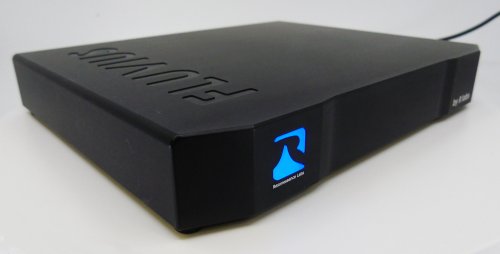
Resonessence Labs has always specialized in DACs. From the original Invicta which put them on the map back in 2011, to the diminutive Herus DAC/headphone amp, the Concero series, their superb Veritas, and the latest flagship Signature edition of the Mirus Pro - when people think Resonessence Labs they think D/A conversion.
That changes with the recent launch of the Fluvius, a streaming audio device designed with the same attention to detail as the rest of the Resonessence lineup.
Fluvius sells for $1750 and is a perfect aesthetic match for the Veritas DAC, though it also looks great stacked with pretty much any DAC (Resonessence or otherwise). Fluvius is very simple: USB output for audio, two more USBs ports for storage/accessories, Ethernet connection for networking, HDMI output for audio and/or interface, and a power port which requires 5V/4A (but more on that later). And that's about it. No analog outs and no legacy SPDIF connections. There is a microSD slot but a stern warning in the user guide tells us this is for maintenance/factory operations only - not to be used by the end user under normal circumstances.

The Fluvius enclosure is classic Resonessence Labs. That means fully CNC milled, incredibly solid, with an illuminated push-button logo that doubles as standby switch. No front panel display or other controls, as everything is handled remotely. Fluvius doesn't have integrated WiFi (but a USB WiFi adapter will work if you really need that), nor does it have internal storage apart from what is used by the OS. It can support connected USB drives and play music from there, which worked fine with my 256GB Sandisk USB stick, but the main focus seems more on streaming. My library lives on a NAS and Fluvius easily accesses all 5+TB worth of music without issue. It also supports Tidal and Qobuz for lossless streaming, which my informal surveys of the community tell me are becoming pretty widely used.

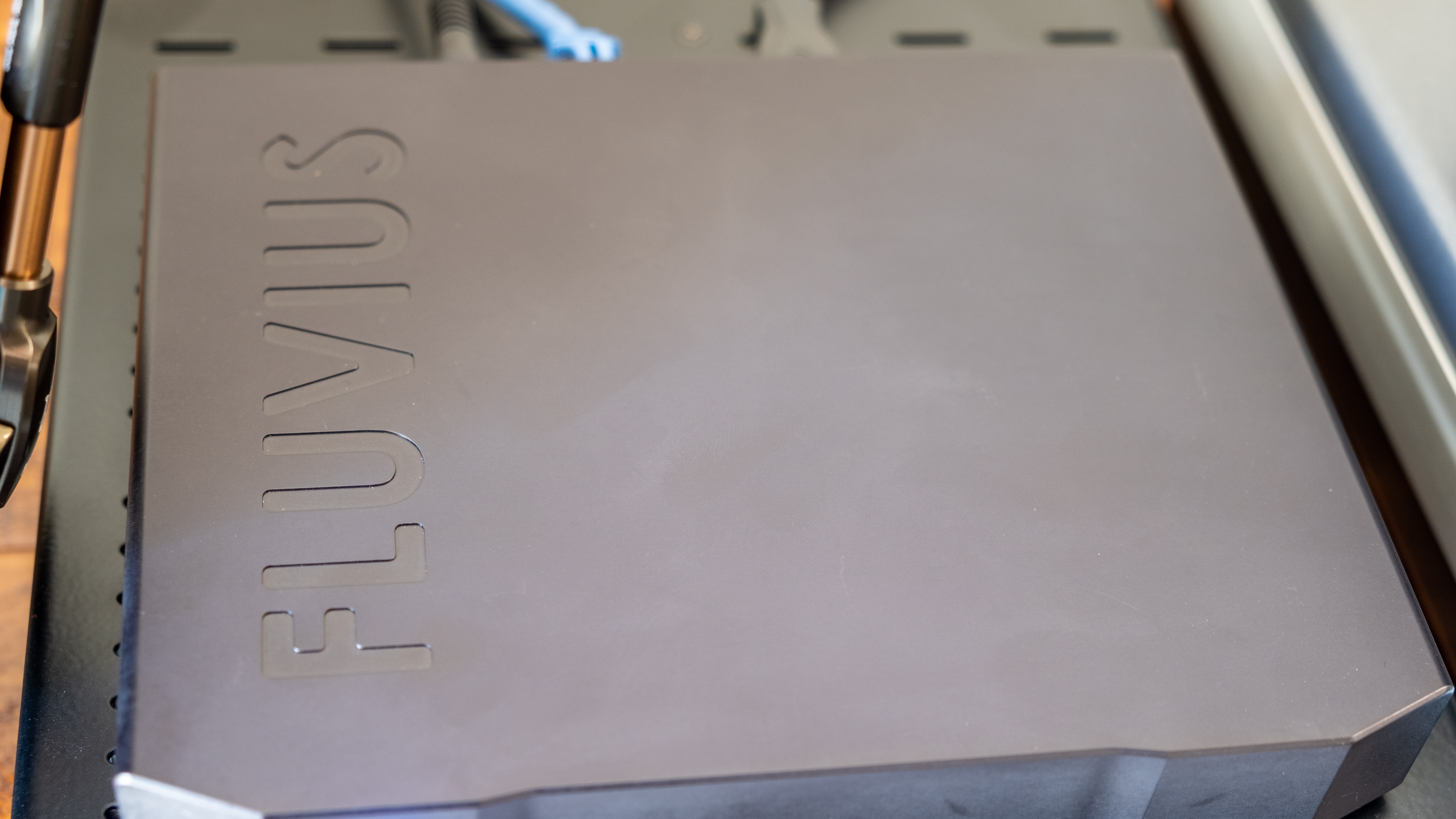

Internally, Fluvius is built around an 8-core Samsung processor along with 2GB RAM. This ends up being more than enough juice for playing any files I've thrown at it, including hi-res PCM and DSD, and it can do hardware upsampling if you want it to... with a clear warning that - more often than not - the designers find native sample rates to sound best.
On the software side, Fluvius runs on Android 7.1 with USB Audio Player Pro acting as the interface for music playback. This allows the device to sidestep any OS-based resampling and spit out a pristine native signal, including hi-res and DSD. It also allows use of streaming services - Tidal, Qobuz, Google Play Music, Shoutcast radio, and of course UPnP/DLNA from a NAS or other local source. Anyone who has used UAPP knows it is a simple yet effective solution, nice and stable thanks to years of development and updates.
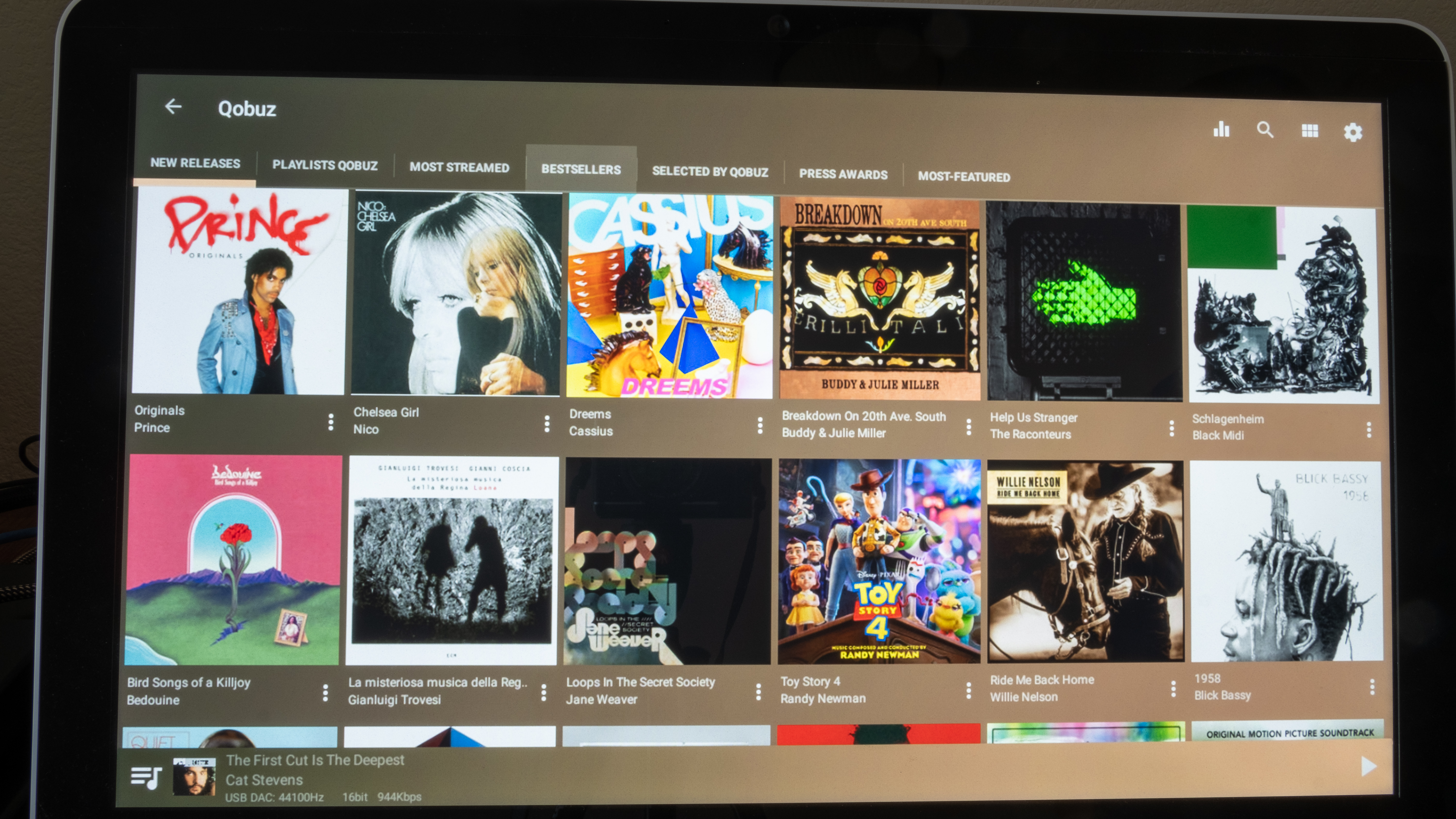
UAPP uses a custom driver for hi-res audio, allowing phones (and other devices) to bypass the standard 48kHz Android limitation. This can make a significant impact on audio quality, which is why UAPP has become commonly used by many enthusiasts. Resonessence Labs takes it a step further by actually writing their own driver to improve things even more. Note how the UAPP site mentions all Samsung Exynos-based devices doing a forced resample (technically upsampling) to 192kHz regardless of input - the custom Resonessence drivers allow Fluvius to bypass that problem and maintain the integrity of the native sample rate.
In the user manual, Resonessence spends a good amount of time explaining their design philosophy. Since I don't see this manual uploaded to their website yet, I'm going to quote the relevant section here rather than try to paraphrase it myself. It's a bit lengthy and covers a range of topics, but worth the read if you like this sort of thing:
"In the modern era of digital music Resonessence products excel: the DACs such as MIRUS and VERITAS
are designed with the best of our understanding of how to maintain quality and deliver perceptively
better audio performance.
We note that many of our customers gather and maintain music collections either on dedicated servers,
cloud-based subscription services such as Tidal, or on their own cloud accounts. This means that playing
high quality music now involves streaming – moving music as a digital stream from one place to another.
Audiophiles will have noted that the means to achieve this streaming affects the music quality: a non-
optimum streaming source can never be improved upon, no matter how high performance the DAC and
amplifier that are connected at the end of the stream.
In our INVICTA products we gave our customers the opportunity to use an SD Card as the music source –
“streaming” that music from the SD Card to our internal DAC parts was handled as carefully as we know
how to do – the clock is managed optimally and even the means to access the card (the firmware that
accesses the raw bits on the card) was designed by Resonessence and so under our control to be
optimized to the listening experience.
But if you plug any of our DAC products into a third-party streamer, we are left to do the best we can
with the stream of data we are sent. Listening tests confirm that some third-party products are very
good, some could be improved upon.
Streamers are digital products – they move digital data from one place to another but where does any
part of this process degrade, in any way, the listening experience?
We find it is to do with the software in the streamer– it is not related to the precise type of USB port or
Ethernet connection used (but faster is better even when not running at the fastest speed).
Our experience is that problems, or potential degradations, relate to the marshalling of the data.
“Marshaling” as the name suggests, is to do with how the data is packetized, collected and assembled
from the input source and prepared for output at the output source.
Using any streamer product, the most convenient connectivity involves WiFI. FLUVIUS may be
connected to your WiFi router by inserting a USB to WiFI dongle. Bear in mind that any WiFi connection
demands the most intense marshalling efforts: WiFi is a remarkable set of protocol layers sitting above
an outstandingly clever digital radio substrate: that WiFI works as well as it does is a testament to the
skill of the radio and software designers.
But WiFi demands a complex effort in marshalling of data: it neither arrives continuously nor does it
arrive at a predictable time. A layer of the protocol assembles the data into order and prepares the data
to be streamed out, but this layer is in constant communication with the physical layer that is master of
the data availability. The stream may exhibit asynchronous behavior as the inherently asynchronous
radio layer is marshalled into a synchronous stream for output.
We mention all this to explain to you why, when you have listened to music streamed over a WiFi
connection, it will have been noticeably inferior to that which you can get from, for example, the SD
Card in the INVICTA.
However, we do recognize the convenience of a WiFi connected system and we document in this note
how to configure FLUVIUS in that mode. It works by plugging a third party WiFi dongle into the FLUVIUS
product and then streaming via WiFi – but for the reasons explained above, we think you will enjoy the
listening experience a little more if you use a high speed wired connection or USB source.
What works optimally in our experience is as follows: first, use the 1Ghz wired Ethernet if possible.
Ethernet, unlike USB, is galvanically isolated and you will find it to be the most reliable and artifact free
source of remote data. Secondly, use the USB3.0 ports – one to the DAC, one to the data source. The
data source can be a local hard drive (that is, you may plug a USB drive into the FLUVIUS directly, we use
the Samsung T5 series in our testing, but any USB 3.0 drive should work).
___________________
We have developed the FLUVIUS streamer product to embody all we know about audio into our first
audio product that has no analog signals in it: FLUVIUS is essentially a software product – it is an Android
based streamer with custom Resonessence software to avoid all the known pitfalls of non-audiophile
software.
Listen to our FLUVIUS product and compare it with other streamers. If you can, use one of our DACS so
that the aspects of the streamer are a little easier to perceive. We think you will be able to hear a
difference.
The FLUVIUS is just moving digital data from one port to another and data is data so where does any
perceptible audio degradation occur?
The first and easily understood aspect is ensuring that the average data rate input is the same as the
average data rate output. For reasons that all readers of this note will understand, the master must be
the DAC – the final sink of the data – not the source. This is what Asynchronous USB is all about: the
precision clock of the DAC must determine the data flow.
In a typical Android based streamer the request for an asynchronous data source made by, for example,
our VERITAS DAC, may be silently ignored. Android systems accept the notification that asynchronous
mode is requested, but in general they may not act upon it.
The reason for this is that the Android system is commonly synthesizing the audio stream data: it is
down-converting from a common format that is chosen to optimize the playback of video, not audio.
(Most cell phones have this “feature”. Only with special software can a typical Android cell phone
support asynchronous audio data mode.)
Beyond the synchronicity of the data is the variability of the timing of the data during the marshalling
process. A CPU on a chip, such as the excellent and popular Raspberry Pi, Beagle, Arduino etc. is
programmed to perform this data marshalling and the time that it takes depends upon its clock speed
and how many individual cores it has available. More cores and more speed means that well-written
software can complete the data marshalling process faster - leaving less risk of asynchronicity and never
having to drop or insert a “fake” data sample.
FLUVIUS uses the Exynos core as the computing engine and runs the Android operating system on
it. The Exynos chip is a cell phone chip: it has considerably more power than the typical simple Android
system (it is able to run the entire cell phone environment) but we use all its power in just the audio and
GUI processing. The Exynos has four cores running at high speeds and four more cores running at a
lower clock rate dedicated to managing the IO – the USB and Ethernet etc.
We do not rely upon the built-in audio drivers: we write our own drivers that do respect the DAC’s
request for Asynchronous mode, and because of the raw speed of the system, marshalling activities
complete quickly and do not create any perceptible listening degradation."
So there you have it. Various competitors place their main focus on things like power supply quality, processing power, or noise filtering (among other things), while Resonessence is all about "data marshalling" via their custom built software. It's a fairly unique approach that I don't think I have seen elsewhere, or at least haven't seen it explained in such a way. Note that the use of a WiFi adapter is possible but ranked last in terms of SQ, behind Ethernet and direct USB playack, so I didn't bother trying it.
Resonessence doesn't use a specialized USB solution from the likes of SOtM or Matrix. But perhaps they don't need to - this isn't a big PC with 400+ watt switching power supply, half a dozen PCI lanes, and hundreds of background processes running. The Fluvius is purpose built with an eye (and ear) towards maximizing playback quality, so everything should be well sorted right from the start.
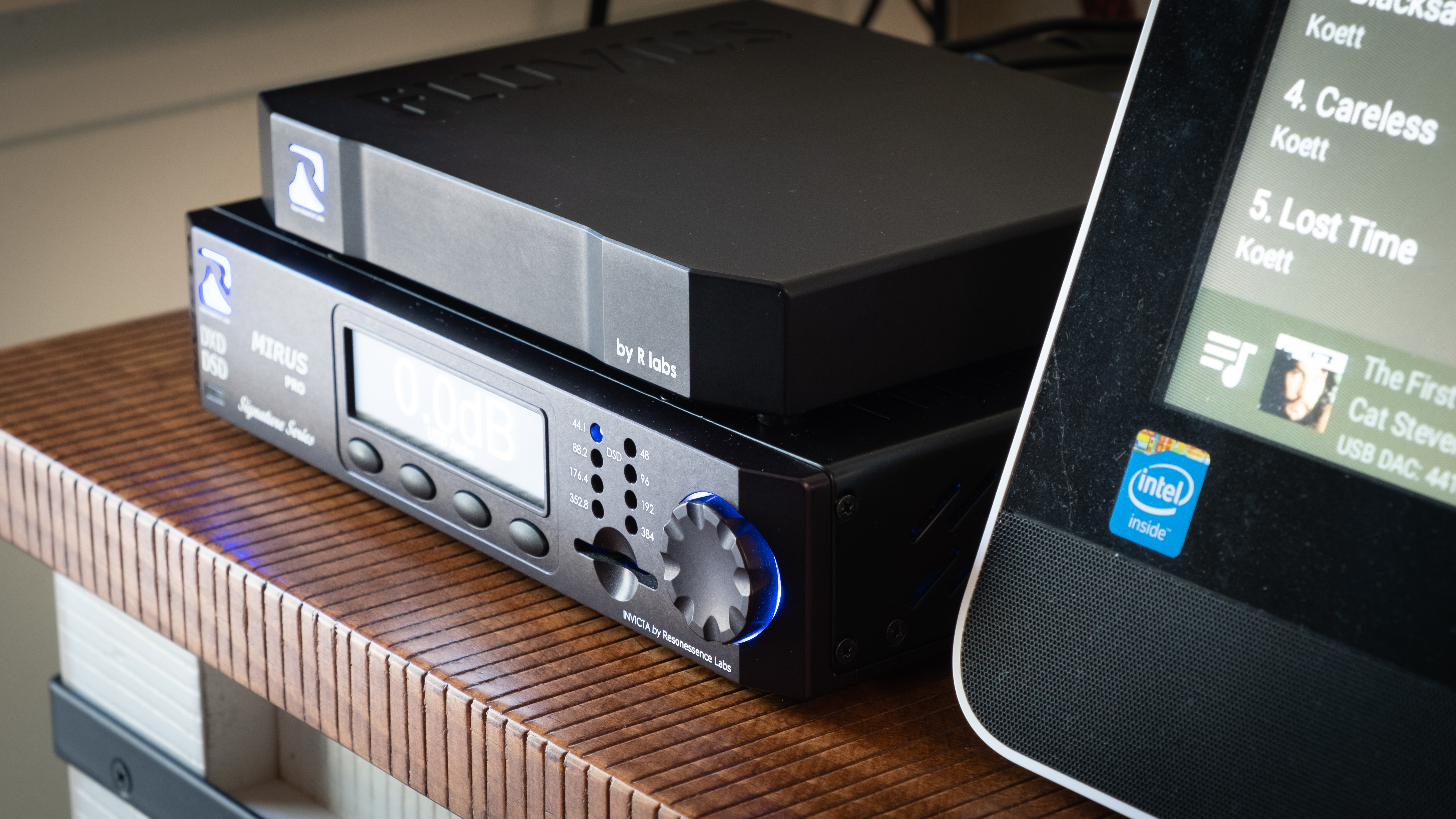
SYSTEM
I tried the Fluvius in many different system configurations over the coarse of several months. Of those, I spent the most time with the following components:
Power: Equi=Core 1800 balanced power conditioner with Audio Art power1 ePlus AC cables for all components
Library Storage: Asustor AS6404T NAS with 24TB storage plus SSD cache, storing my entire 5+TB library, wired with gigabit Ethernet from the other room
DACs: Resonessence Labs Mirus Pro Signature, Yulong DA10, ModWright Oppo 205, Airist R-2R, Sonic Frontiers SFD-2 mkII
Amplification: Niimbus US4+, Cayin HA-300, Pass Labs HPA-1, custom hotrod KGSSHV
Headphones: Meze Empyrean, Sony Z1R, HiFiMAN HE1000v1, Lear BD4.2, 64 Audio A18t, Stax SR-4070 and SR-007mk2
Analog Cables: Audio Art IC-3 e for XLR and RCA connections, Audio Art HPX-1 SE for Empyrean, Moon Audio Silver Dragon for Z1R, Effect Audio custom 8-wire design for IEMs
Digital Cables: BMC PureUSB1, iFi Gemini3, Audio Art D1-SE
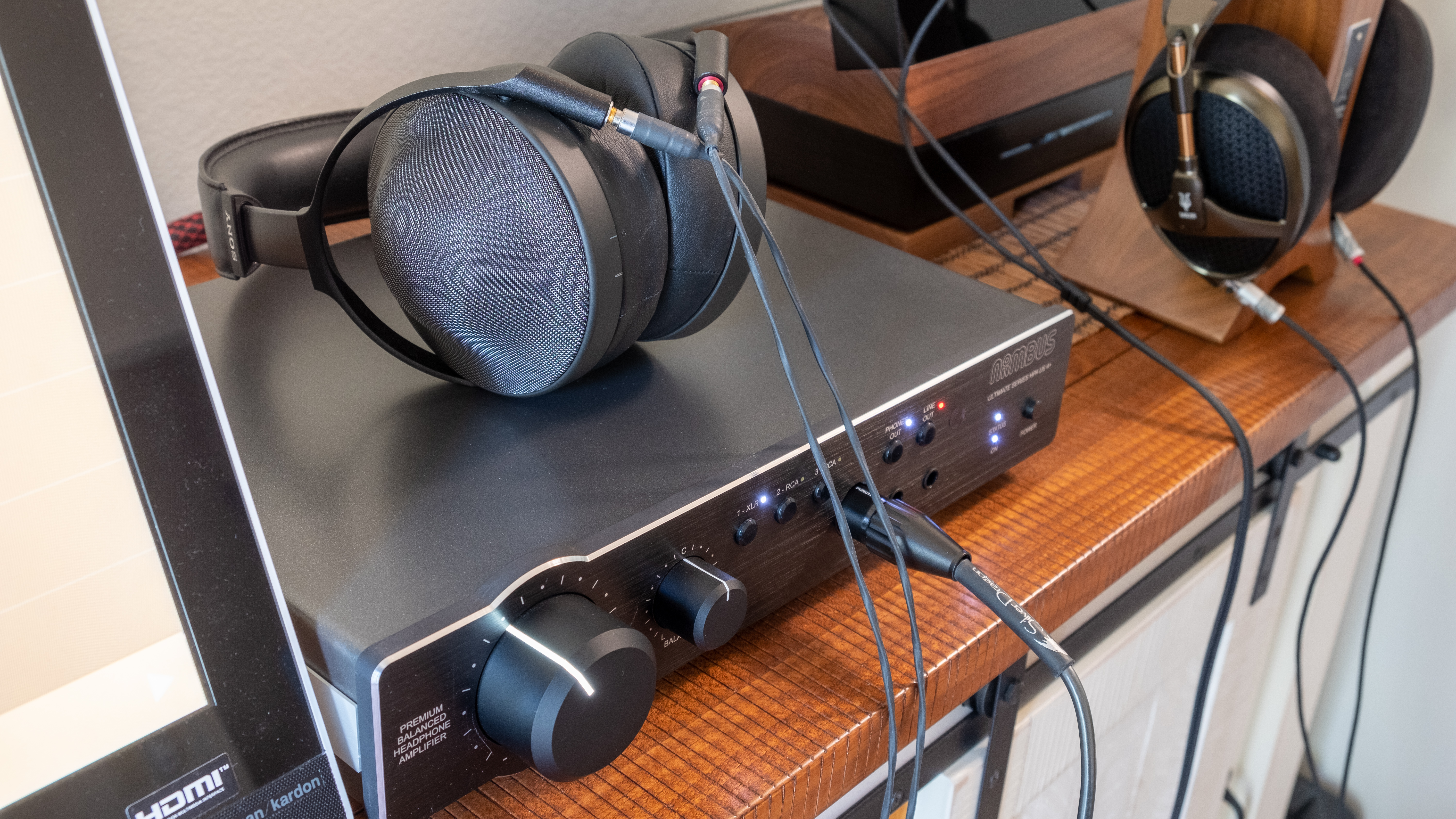


In Use
First off, you really do want a monitor in the system - at least during initial setup. I was eventually able to get everything configured to the point where I could remove the monitor and control things via Android tablet using the HiFi Cast app (my personal favorite among many UPnP control options) but the initial setup needs a monitor. I happen to have an ancient and fairly rare Acer device which is sort of a combination Android "tablet" (version 4.2!) plus 21" monitor using an HDMI input. The Android aspect is pretty worthless these days but the thing can actually run on battery power, and I can get a couple hours of use in monitor mode - plenty for getting everything set up.



Fluvius comes with a bundled remote that is a sort of generic design, with many variations floating around on Amazon and other places. It's got a keyboard and touchpad for mouse use, and surprisingly it works quite well. The USB dongle will take up one USB port but there are still two more available so it's no problem - just make sure to use the slower 2.0 port which is intended for just this type of thing.

Browsing the menu system with the remote is fairly simple and intuitive. If you've used USB Audio Player Pro on your phone, you'll know what to expect - just imagine mousing around instead of using a touch screen. I was satisfied with the various options for sorting music by artist, album, genre, folder, etc, and the system handled my enormous library without complaining. It's not the most flashy looking user interface in the world (definitely no Roon or even JRiver) but it gets the job done and covers all the basics for album art, sample rate display, sorting by genre/artist/album, etc.


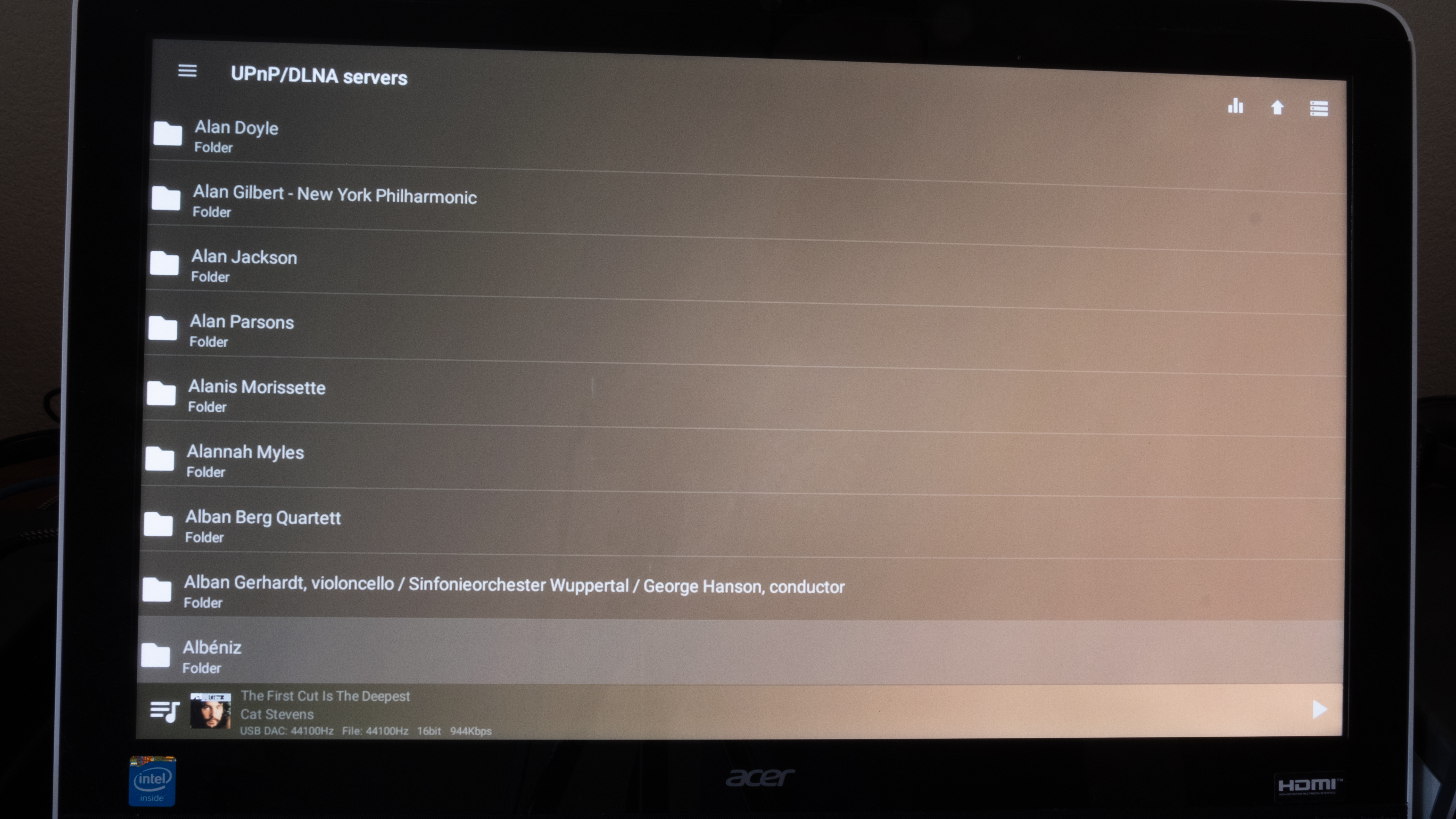

One interesting thing is that the custom drivers allow for volume control on certain DACs. Pairing Fluvius with the Resonessence Labs DACs, and probably some others (I don't have a list though), we can adjust things in software and it will change volume on the DAC itself. That could definitely be useful depending on your control preferences.
Listening
Regardless of which DAC I used, Fluvius sounds tight, precise, accurate, and clear. Those are some loaded words, and I can see some people being turned off by what they might assume is a cold, sterile sound. But I would disagree with that assessment. In my mind, a transport should be as clean as possible, to allow maximum performance out of the connected DAC/amp/transducers.
And that's exactly what happened with the various DACs I used. Yulong's DA10 had a touch of sweetness to it, while the ModWright 205 was bold and rich, and the Mirus Pro Signature startlingly transparent - all native attributes of the DACs themselves without any sonic influence from the transport. Which is precisely what I am looking for. A transport that imparts its own signature into the mix can be fun, but ultimately this approach is the better method.
My Sonic Frontiers DAC predates USB by quite a few years, so the USB-only Fluvius won't pair with it as-is. Adding the Matrix X-SPDIF 2 gave me a usable AES signal with which to feed that vintage DAC, resulting in glorious sound that I could happily live with indefinitely - despite age and lack of hi-res playback capabilities. The SFD-2mkII is very sensitive to transport quality so to get a superb result like this speaks very highly of the Fluvius (and the Matrix for that matter).
I like to call the Fluvius a USB-only transport, but that's not strictly accurate. There's also the HDMI out which, while not commonly used by headphone aficionados, can actually be a viable connection. My mind immediately goes to NAD's unique M51 DAC, but also the numerous good-to-great quality processors and even AVR units out there which all pack HDMI inputs. There is tons of nice gear from Classe, McIntosh, Theta, Datasat, Levinson, and others which make viable DACs/preamps, and I wouldn't hesitate to use these in an audio-only rig - but of course a "home theater" type setup would be just as relevant. I did throw Fluvius in my living room system with an Anthem processor, Merrill Audio monoblocks, and Usher Mini One DMD speakers, and it performed exceptionally well via the HDMI connection. I have used quite a few music streamers/servers in that rig and I would rank Fluvius as a top-tier performer when it comes to audio quality.

Comparisons
Though music servers and streaming players are everywhere these days, the Fluvius goes in a somewhat unique direction in both hardware and software. I don't really see it competing with the Aurenders of the world - that's a different approach for a different sort of customer. That said, I did have recent experiences with three other devices that I thought might make for interesting comparisons.
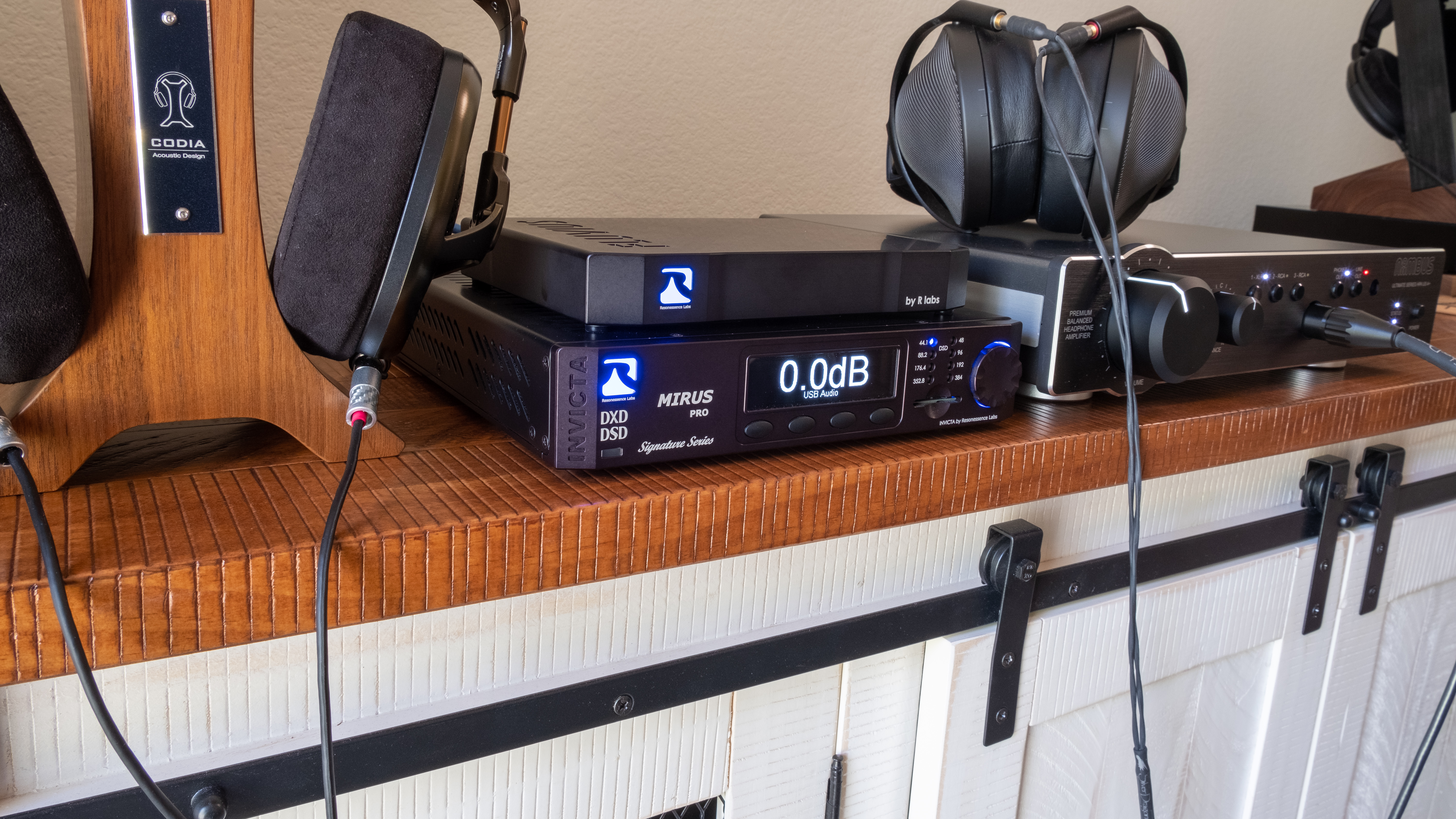
Playback Designs Syrah ($6500)
The Syrah shares a similar design concept with Fluvius in that both models tap general purpose computing platforms stuffed into rather substantial enclosures. Playback Designs opts for a "carefully selected" fanless Intel NUC of unknown specifics paired with a switch-mode PSU of their own design. They don't claim any fancy customization of the NUC board but rather focus on their Windows-based software optimization. Like Resonessence Labs, Playback Designs is very focused on the timing of the data stream as it passes from one component to the next, and they similarly embrace the concept of finding adequate processing power rather than using a more potent (and therefore noisy) CPU.
While Fluvius has basic integrated playback software which can be supplemented by your choice of UPnP apps on a tablet, the Syrah leverages JRiver's Media Center software, simplified and paired with a custom app for a streamlined user experience. Syrah also handles CD ripping directly - again via tweaked 3rd party app in the form of dbPoweramp, plus a (bundled) external USB optical drive. Resonessence assumes users already have another way of ripping, or perhaps intend to bypass a local library altogether and just stream lossless music from Tidal/Qobuz.
With the massive differences in price and size between these two units, one might think the Playback Designs solution is automatically in another league. And it actually is - when it comes to being approachable. The Syrah is easier to get up and running, has a more robust user interface, and of course allows for building a library via ripping CDs directly. Fluvius assumes a certain level of technical prowess, along with a pre-existing library. If someone was approaching file-based playback for the first time, and trying to decide between these two units, I'd point them to the Syrah without question.
When it comes to pure sound quality though, I find the diminutive Fluvius to be generally superior. Obviously this will vary from system to system, or more specifically from DAC to DAC, but in most cases the Resonessence Labs solution gave a cleaner, more believable presentation, with a particularly superior sense of space and size. Imaging is terrific - listening on an HD650 won't necessarily show this all that well, but switch to HD800 or Empyrean (or speakers...) and it becomes pretty obvious that Fluvius does a better job. Treble is also very slightly more clear and refined. Drastic changes? No, both devices make excellent transports. But for extracting the absolute best from a high-end DAC, I'd choose the Fluvius - and save big money in the process.
The less refined user experience with Fluvius does not necessarily bother me. I've already got a massive collection of ripped CDs, plus a bunch of purchased music from a variety of sources. And I get a ton of use out of Qobuz and Tidal for lossless and even hi-res streaming. I'm accustomed to various apps which I can use to control Fluvius, and I know enough to get it all up and running despite some potential difficulties early on. Is it the ideal music server? Nope. But for those tech savvy enough to get it going, Fluvius offers unbelievably high sound quality for the relatively modest asking price.

Sound Science Music Vault Diamond Ultra ($5500 as tested)
This device basically takes the opposite approach from the Fluvius and Syrah. Those two both spec for adequate power while keeping a low "footprint" for minimal EMI/RFI, heat, etc, Music Vault goes for massive overkill - a very fast Intel i7 CPU and far more RAM than could ever be needed in this application. The theory is that stressing a CPU is not ideal, but the potent i7 can cruise along using a very low percentage of its power and thus have more headroom.
I'm not here to judge the merits of the different design philosophies, but I will say the utility of a powerful system can't be denied. The Music Vault system can run Roon, including extreme DSD upsampling, without issue. It has a Blu-Ray drive if you need that for some reason (which of course also rips CDs). It is loaded with internal storage - fast SSD for system use supplemented by a large spinning drive for the library, so there's no need for a NAS or other external storage.
With those advantages comes some drawbacks. For one, this rather expensive server looks like a piece of industrial equipment - and not a particularly appealing one at that. It's just an ugly enclosure in my personal opinion, unable to even remotely hide its status as a giant PC. While the Fluvius and Syrah look right at home in a rack full of tastefully designed high-end audio gear, the Music Vault product is one you'll want to hide away on the bottom shelf (or ideally behind a cabinet door) if at all possible. Also, the system is not quite silent. It does use a passive heatsink for the CPU, but there's still a case fan spinning at low RPM which I can't help but hear. An issue while listening to music, particularly via headphones? Probably not, but I'm accustomed to silent devices by now so this threw me off a bit.
In terms of the actual experience, Music Vault is great as long as Roon is used. It does support various other methods but Roon is by far the most well executed option as far as I'm concerned. Using this makes me wish Fluvius worked as a Roon Endpoint, as it really does elevate the user experience.
Sound quality for the Music Vault is a mixed bag for me. With certain DACs, and with DSD upsampling in particular, I find it arguably the best of the bunch. It is particularly superb feeding DSD512 to the Yulong Audio DA10 - a $1200 DAC which, when used in that fashion, sounds like a far more expensive device. The Exogal Comet Plus also pairs quite well just using native sample rates, as does the BMC UltraDAC.
In other cases the Music Vault comes in dead last behind the Syrah and Fluvius, sounding loose, flat, and fairly unfocused. I particularly dislike it with older DACs from Sonic Frontiers and Audio Research, but the relatively recent Keces S3 doesn't seem to like the Music Vault either. Overall it's hard to predict how it will pair, which makes things frustrating.... good matches are spectacular while poor matches would be better served sticking a $500 sMS-200 in the chain and relegating the Music Vault to server duty only. I feel like a ~$5k product should guarantee decent results across the board, and this one just doesn't in my experience.
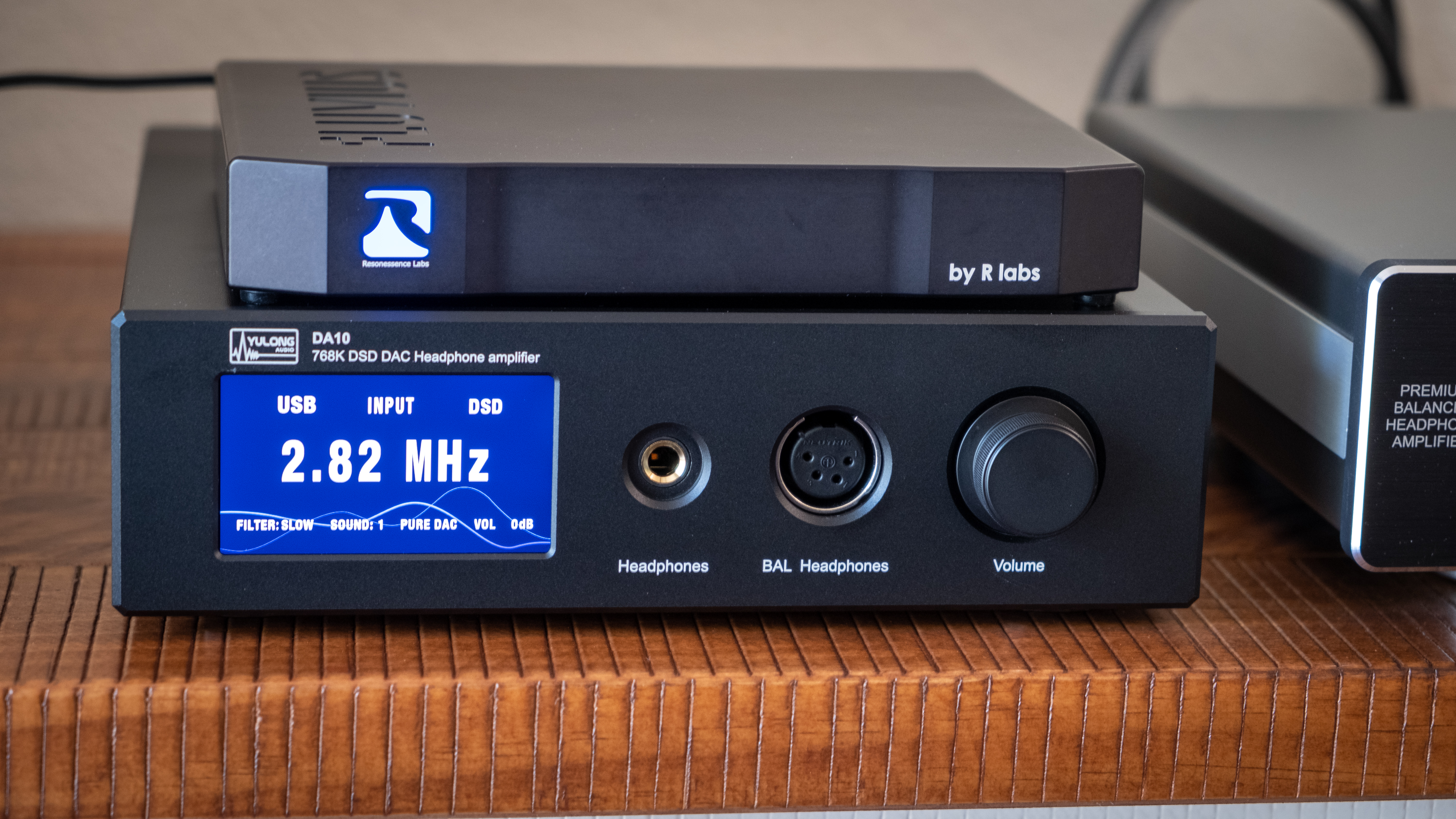
Nativ Vita ($2399 as tested)
I recently reviewed the Nativ Vita at Darko Audio, and it makes for an interesting comparison to Fluvius. Why? Because despite the $2399 price listed above (which includes 2TB worth of solid-state drives), Vita can be had for $1799 if we skip internal storage and just use it for streaming. That's within spitting distance of the $1750 Fluvius. The "interesting" part is how different both units are from a design and usability standpoint, and how despite those differences I really enjoy each one quite a bit.
Vita is dominated by a large touch-capable HD display. It has multiple outputs in various legacy formats. It has built-in WiFi, Bluetooth, support for Apple Airplay, Google Cast, and several other streaming formats. It can run over a dozen streaming services, and is fully Roon capable. All of this stands in contrast to the Resonessence device which is USB-centric, Ethernet only, no display, no Roon, and focuses mainly on Tidal and Qobuz. Obviously two very different approaches, and at face value we would choose the more feature-rich device every time.... right?
I do love the Nativ Vita for a variety of reasons laid out in the above-linked review. But I also quite enjoy the Fluvius for its simple, direct approach, and - most importantly - for its superb sound quality. More often than not, when using the same DAC (via USB, obviously) with each device, I get slightly better performance out of the Fluvius. While the Vita sounds outstanding in every way, Fluvius gives just a touch more realism. Wider, more expansive soundstage. More vibrant tone colors. Superior imaging. The delta is admittedly small and is not always apparent depending on the other associated components... but in many cases I did indeed prefer the little Resonessence device. Of the field mentioned above, and strictly focusing on SQ alone, I would rank it Fluvius, then Vita, then Syrah, with the inconsistent Music Vault alternating between last place and competing for first. That makes the Fluvius the top dog in terms of sonic performance per dollar.
Tweaks
I mentioned earlier that the stock power supply is a 5v switch-mode design. With PSU upgrades being an obvious path for system improvement, I figured it was worth exploring... unfortunately the specs call for 4 amps which is not very common and thus disqualified any of the nice power supplies I have on hand. I ended up buying a suitable PSU on eBay, unbranded but clearly aimed towards audiophiles looking to upgrade, for roughly $300.
Long story short - despite the new PSU inspiring confidence with its beefy construction, large R-core transformer and claimed low-noise output, I could not hear one bit of difference compared to the stock unit. This could mean the Fluvius is well-sorted internally to where it doesn't need a linear supply, or it could just mean the eBay unit I purchased isn't very good. I suspect the 4A requirement is there to cover power-hungry USB attachments such as portable hard drives, which would mean the basic requirement for the solo Fluvius is a lot lower... but I didn't want to test that theory as my only other PSU capable of 5V tops out at under 2A.
I rotated through a slew of additional tweaks, hoping to find any way of bringing sonic improvements. I tried the BMC PureUSB1 active USB system - no change. I used various combinations of the iFi iPurifier3, DC iPurifier2, and iSilencer 3.0 - no improvement. I enlisted the iFi Gemini3.0 split USB cable, with the power leg being fed by a Keces Audio P8 linear power supply - still nothing.

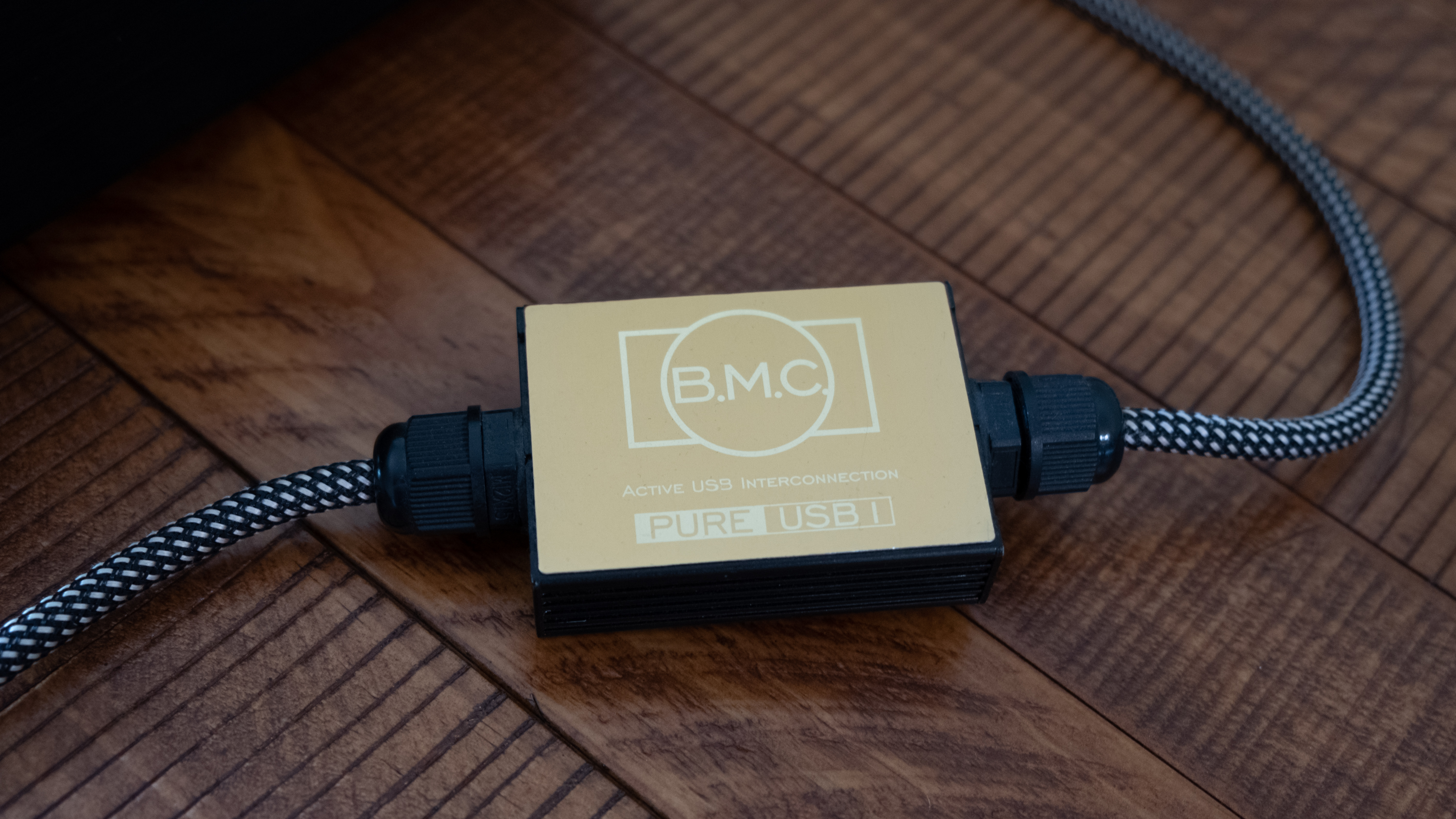
Bottom line is this: the Resonessence Labs Fluvius is extremely well optimized and does not require any additional tweaking.
Conclusion
The Fluvius is among the very best sounding transports I have ever experienced. It competes with megabuck disc spinners, and outshines several far more costly streamer/server devices upon direct comparison. From memory, I'd put it above many others I've owned in the past as well, all of which sold for double, triple, or up to five times as much. Needless to say, Fluvius is a superb sonic performer.
As for the total user experience, that really depends on what one might be after from their transport. Those who demand Roon are obviously out of luck, and power users in general may find the UAPP interface a bit simplistic. The lack of SPDIF outputs could be problematic for some users, as could the lack of any integrated disc-ripping solution. But
Fluvius does handle all the basics of playback in a competent, easy to use fashion, so I find it difficult to fault in that respect.
Ultimately different folks are after different things in a device like this. Only you can decide what your needs are in terms of connectivity and other features. For straight-forward, no frills USB or HDMI playback with unsurpassed sound quality, the Resonessence Labs Fluvius makes for a compelling choice.


